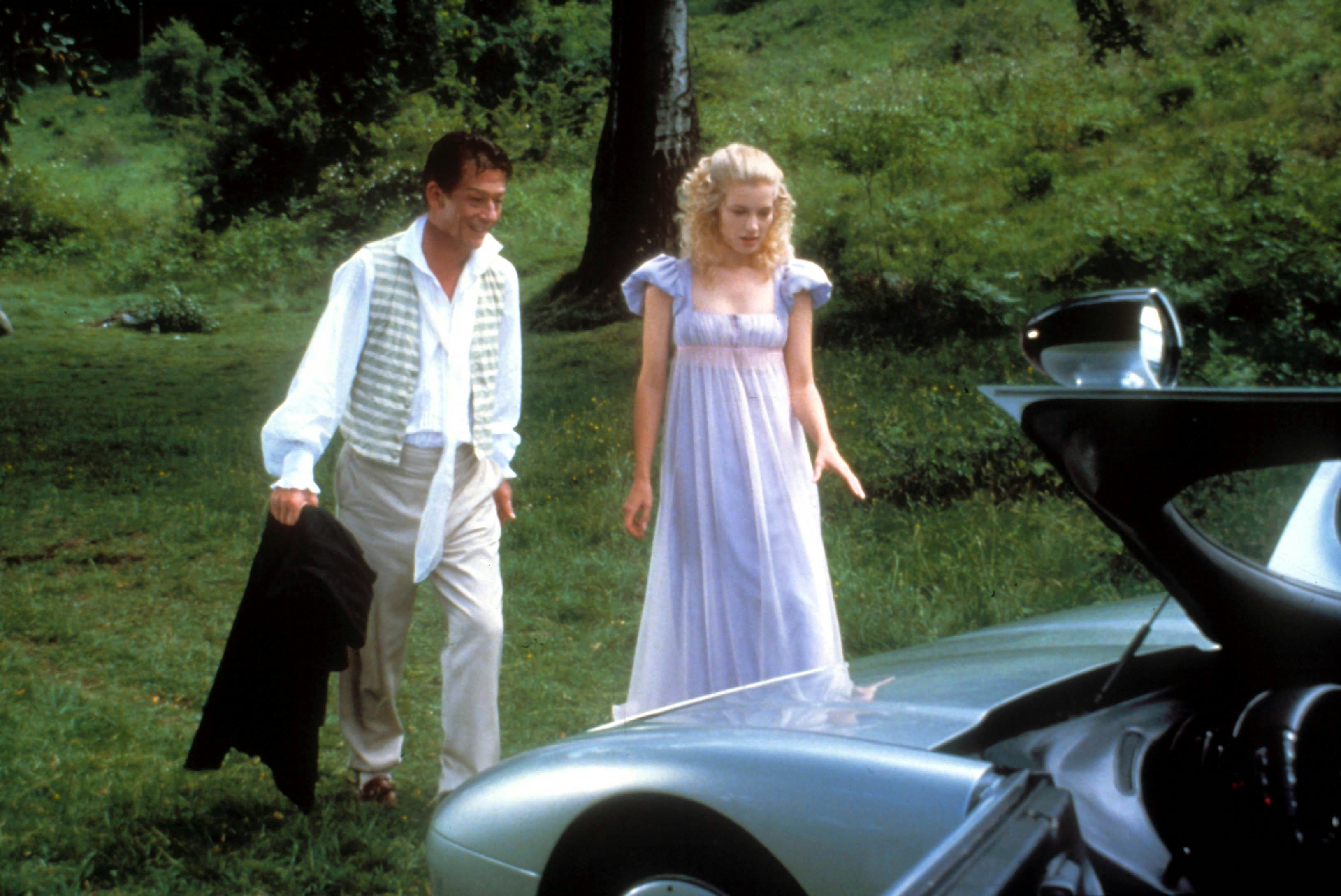
There is a literal s**t-ton of movies that carry the name “Frankenstein” in their titles. From the most faithful adaptations of Mary Shelley’s original novel to in-name-only, bargain-basement cheapies, there has been no shortage of motion pictures ready to glom onto the property, going back to the earliest days of cinema. But occasionally one emerges that is actually offbeat and decent enough to warrant additional attention.
One of those is 1990’s Frankenstein Unbound, based on a 1973 novel by famed sci-fi author Brian Aldiss. No, it’s not adapted from Shelley’s Frankenstein, strictly speaking — but her landmark 1818 tome is very much part of the proceedings. The movie was directed by Roger Corman, marking the B-movie and exploitation king’s return behind the camera for the first time in nearly 20 years after he transitioned to mostly producing and distribution. While it also ended up being Corman's last directorial effort, he certainly went out with one of the strangest movies of his long, colorful career.
Frankenstein Unbound stars John Hurt as a particle physicist named Joseph Buchanan, who, for reasons that are murky at best, has invented an energy weapon in the year 2031 that can completely obliterate anything it’s pointed at. There’s one small side effect, however: The device creates rifts in time and space that suck in anything that gets too close to them — and that includes Buchanan and his talking AI-powered car, which are caught in one such rift and deposited in the hills of Switzerland circa 1817.
It's there that Buchanan — after some amusing fish-out-of-water bits — finds himself meeting a supercilious, condescending scientist named Victor Frankenstein (Raul Julia), whose curiosity is aroused by the digital watch on Buchanan’s wrist. For his part, Buchanan tells the good doctor that he’s “familiar with his work,” although he doesn’t explain how, nor does he quite understand how Frankenstein is a real person.
From that moment forward, Buchanan essentially becomes involved in a potted version of the events of Mary Shelley’s book, starting with the Frankensteins’ maid being wrongfully executed for the murder of Victor’s younger brother. Of course, the real murderer is Frankenstein’s monster (Nick Brimble), who promises more carnage if his creator doesn’t serve up a mate for him. Also observing all this? A young woman named Mary Wollstonecraft Godwin (Bridget Fonda), not yet married and working on what is ultimately going to become her famous book.
Buchanan eventually starts hanging out with Mary, Percy Shelley (Michael Hutchence), and Lord Byron (Jason Patric), and in one cringeworthy sequence — considering the age gap — even hits the sheets with Mary, who proclaims, “Percy and Byron preach free love. I practice it.” Good for her, although these passages — as well as some weird dream sequences on the part of Buchanan that Corman rather haphazardly drops into the action here and there — don’t interact quite so smoothly with the rest of the movie’s Gothic sci-fi fever dream.

Still, the idea of the author existing in the same reality as her creation is unique, and the actual “Frankenstein” portion of the film sticks reasonably close to the original tale for a while. The monster, even with some rather silly-looking prosthetics, is surprisingly faithful to Shelley’s intelligent, philosophical creature. “Who made you?” he asks Buchanan at one point. “I don’t know. God, maybe,” replies the physicist, to which the creature responds, “Who is God, maybe?” Buchanan says without missing a beat, “I think you’d better ask Victor about that.”
After the creature murders Victor’s fiancée Elizabeth (Catherine Rabett), Victor asks Buchanan to help him reanimate her. Things go decidedly off-book from there, as Buchanan also takes the opportunity to recharge his car in the hope of using the weapon stashed in his trunk to open another rift and get the hell out of there. Elizabeth is revived, but all four of them are rifted into the far future, where they land on a snowy mountain near the last remaining city on Earth — Buchanan’s weapon has wiped out everything else.
Corman (who co-wrote the script with F.X. Feeney) establishes the parallels between Frankenstein and Buchanan — who both create “monsters” without regard for the consequences — in articulate fashion, making the movie far more literate than most genre fare at the time. He also gets some mileage out of his $11 million budget, a virtual bottomless piggybank by the filmmaker’s usual frugal standards. Some of the effects, like the space/time rift, are predictably cheesy, but sets like Frankenstein’s castle lab and the computer room at the end of the world where Buchanan and the creature have a final showdown are impressive.
This is, by and large, a handsome production — remember, Corman made all those lavish-looking Edgar Allan Poe movies in the 1960s — while both Hurt and Julia easily fill the screen with some suitably operatic energy. Sadly, nobody saw it: Brian Aldiss wrote that there were six other people in the theater when he went to watch the film, which earned less than $1 million. Corman never directed again, although he continued producing movies right up until the day he left this plane in May 2024. Frankenstein Unbound stands as an underseen victory lap for a filmmaker whose taste for both the unusual and the literary informed his finest creations.







